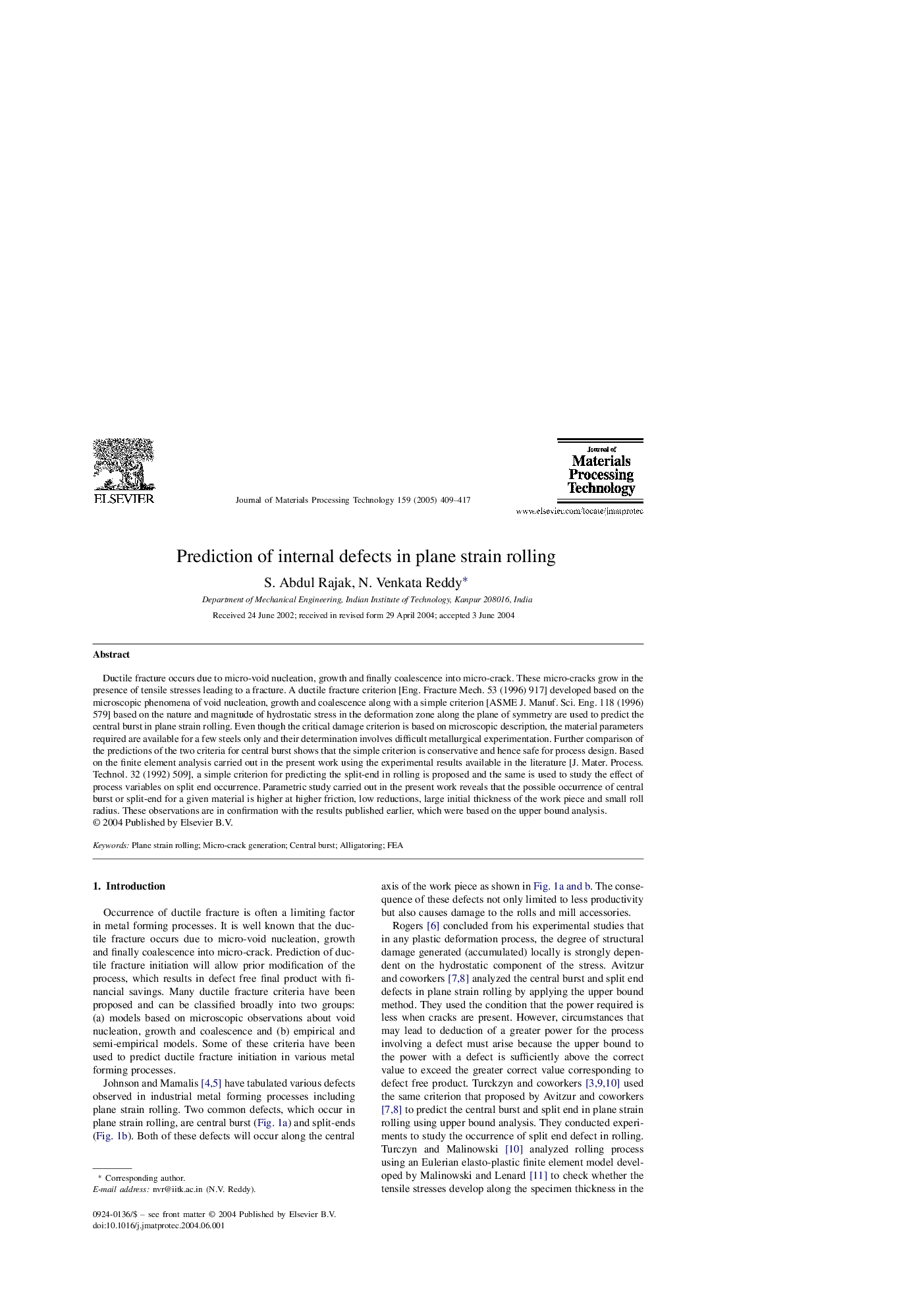| Article ID | Journal | Published Year | Pages | File Type |
|---|---|---|---|---|
| 10418857 | Journal of Materials Processing Technology | 2005 | 9 Pages |
Abstract
Ductile fracture occurs due to micro-void nucleation, growth and finally coalescence into micro-crack. These micro-cracks grow in the presence of tensile stresses leading to a fracture. A ductile fracture criterion [Eng. Fracture Mech. 53 (1996) 917] developed based on the microscopic phenomena of void nucleation, growth and coalescence along with a simple criterion [ASME J. Manuf. Sci. Eng. 118 (1996) 579] based on the nature and magnitude of hydrostatic stress in the deformation zone along the plane of symmetry are used to predict the central burst in plane strain rolling. Even though the critical damage criterion is based on microscopic description, the material parameters required are available for a few steels only and their determination involves difficult metallurgical experimentation. Further comparison of the predictions of the two criteria for central burst shows that the simple criterion is conservative and hence safe for process design. Based on the finite element analysis carried out in the present work using the experimental results available in the literature [J. Mater. Process. Technol. 32 (1992) 509], a simple criterion for predicting the split-end in rolling is proposed and the same is used to study the effect of process variables on split end occurrence. Parametric study carried out in the present work reveals that the possible occurrence of central burst or split-end for a given material is higher at higher friction, low reductions, large initial thickness of the work piece and small roll radius. These observations are in confirmation with the results published earlier, which were based on the upper bound analysis.
Keywords
Related Topics
Physical Sciences and Engineering
Engineering
Industrial and Manufacturing Engineering
Authors
S.Abdul Rajak, N.Venkata Reddy,
